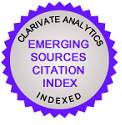The Effect of Fluorine on Animal and Human Health
DOI:
https://doi.org/10.18832/kp2015001Keywords:
fluorine, toxicity, feed, spent grain, brewery yeastAbstract
Fluorine is one of the most widespread elements on our planet. Its content in brewing by-products (spent grains, malt culms, yeast), which are used for the preparation of animal feed is limited in accordance with Regulation No 356/08 of the Czech Republic law. This Regulation reflects the guidelines of the European Committee 2008/76 / EC of 25 July 2008 and Commission Regulation EU No 574/2011 of 16 June 2011 and determines its limit in brewing by-products at 150 mg/kg. The paper is focused on information about fluorine occurrence in the environment and about potential harmful effects of increased fluorine intake on animal and human health including mental state. In animals, tooth development is hindered by uptake of fluorine, resulting in mottling and erosion of enamel and excessive tooth wear. Other symptomatic effects include lameness, skeletal deformity, reduced feed and water intake, and lower weight gain and milk production. In humans, increased fluorine intake can lead to neurotoxic effects, and can also play an important role in pathogenesis of Alzheimer disease. In this context, legislative regulations define maximum amounts of fluorine in feed including brewery by-products, such as spent grain and brewery yeast.







